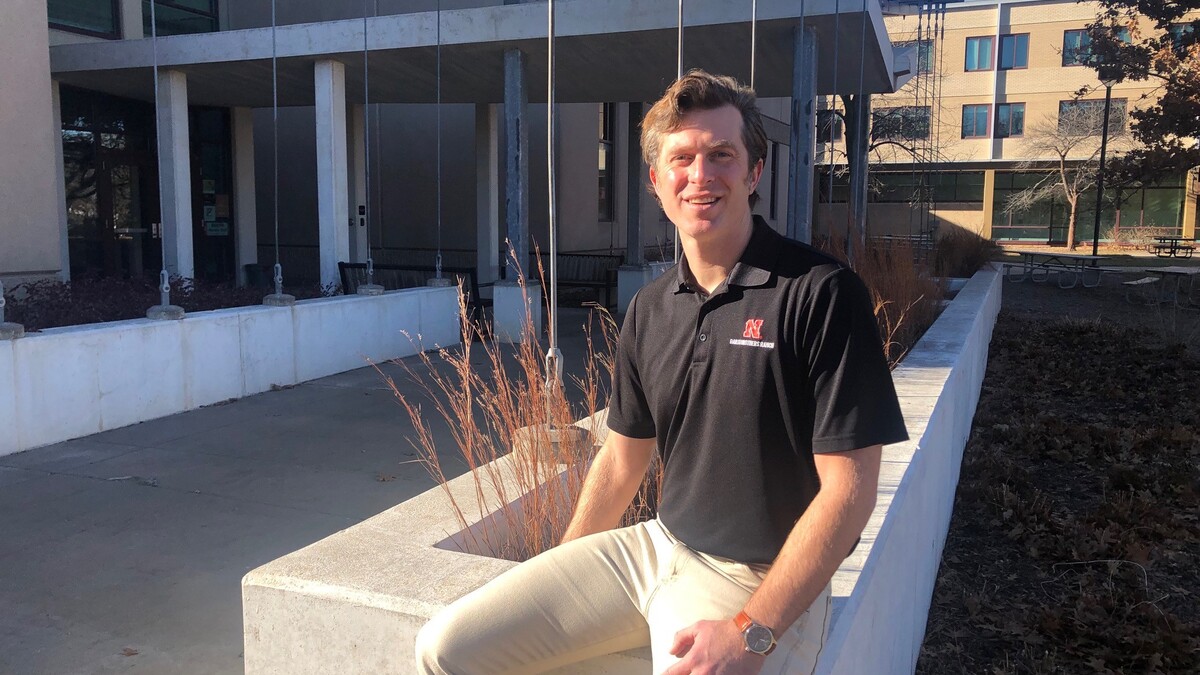Ella Humphrey has always been curious about fish.
“I enjoy the outdoors,” Humphrey, a fisheries and wildlife major, said. “I kept a lot of aquariums, and getting to see those different exotic species and learning about them in a captive setting really piqued my interest. That inspired me to take this path and now I’ve gotten to see different species of fish in their natural habitat. That’s been very enjoyable.”
Even in high school, she found a way to perform research in an internship with the Hutton Junior fisheries biology program, which is sponsored by the American Fisheries Society.
Humphrey knows the underwater creatures have evolved in myriad ways to their surroundings, and now, with the help of a Cabela’s Apprenticeship Research Program stipend and UCARE, she’s conducting research to examine the effects of climate change on Bigmouth Shiners, a plentiful but small fish in the rivers of the Great Plains.
[media:2]Humphrey, a sophomore from Omaha, is in the midst of a yearlong project that encompassed catching the fish, setting up tanks for them in the Aquatic Biodiversity and Conservation Lab, maintaining their health, and performing thermal tolerance experiments, followed by tests of the fishes’ mRNA to find heat shock protein transcripts, using quantitative real-time polymerase chain reaction. Her mentors are Jonathan Spurgeon, assistant unit leader of the Nebraska Cooperative Fisheries and Wildlife Research Unit; Sarah Sonsthagen, assistant unit leader of the Nebraska Cooperative Fisheries and Wildlife Research Unit; and Lindsey Chizinski, lecturer and ABC lab supervisor.
“Fish utilize heat shock proteins to survive in temperatures that might be outside of their normal thermal tolerance,” she said. “In order to see these proteins, you can look for the mRNA transcripts, which code for those proteins. Bigmouth Shiners are widespread in Nebraska and able to live in fairly diverse conditions. They have a wide thermal tolerance, so I want to quantify their thermal maximum, and assess their expression of heat shock proteins up until that maximum temperature.
“The heat shock proteins may act as an adaptive mechanism allowing the fish to withstand elevated temperatures for a longer period of time. The proteins may give the fish enough time to seek out more suitable temperatures or wait for the ambient temperature to decrease.”
The Cabela’s Apprenticeship Research Program allowed Humphrey to buy supplies to keep the fish and perform the testing. The Cabela’s program began in 2016. It is housed in the School of Natural Resources, and is different from many programs that focus on research, said Chris Chizinski, associate professor in SNR, as Cabela’s funding can be used for research or internships in wildlife and habitat conservation, protecting endangered species, or maintaining outdoor activities. Students apply for the funds by writing a proposal and eight to 12 apprenticeships are granted each year, based on funding.
“Each project has to fit the Cabela’s mission area — outdoor recreation, conservation, ecology, hunt, hunter-angler recruitment — but it gives a lot of flexibility to help students have those experiences out in the field,” Chizinski said. “We’ve had students that have had done the whole gamut from working in a wildlife rescue down in Texas, to working with Iowa DNR. I had a student a few years ago who extended a project from class and he looked at trappers in Nebraska and why they do it and what motivates them.”
In the spring, the students present their research or learning experience in a poster setting.
“Students also have to be clear on how this fits in their future career, how this will aid them in whatever career goals they have,” Chizinski said.
For Humphrey, her end goal is a career in research. She hopes to publish her findings from the Bigmouth Shiner experiments and have a leg up when applying to graduate schools in a few years.
“In the future, research is going to be a big part of my career,” she said. “If I go the route of getting a doctorate and becoming a professor, I want an appointment that’s at least 50% research, and 50% either teaching or outreach. If I am able to get to a government agency, then I’d like a position that is primarily research-oriented. I like the feeling of getting that answer at the end. It’s rewarding because I’m able to ask these questions, find the answer, and have evidence to prove it.”
[media:3]Chizinski said Humphrey is a great example of what the Cabela’s Apprenticeship Program is all about — giving students an opportunity to pursue an interest.
“The thing is the experience,” he said. “One big part of what we push for in the School Natural Resources, especially in the fish and wildlife curriculum, is to get hands-on experience — to be able to go out and try these different things that they may be interested in, get outdoors and do the work. This gives them the opportunity to go and try various things. And it doesn’t have to be research, which I think fills a gap in allowing students to explore careers.
“Former students have pointed to this program as an important part of their career going forward. They really enjoyed what they were able to do.”
Students can find more information on the Cabela’s Apprenticeship Research Program here.
The following students also earned 2023 Cabela’s Apprenticeships: Megan Snow, Josephine Ivy, Makena Foley, Madison Hein, Kaitlyn Richards, Lanette Huff and Lindsey Blehm.







